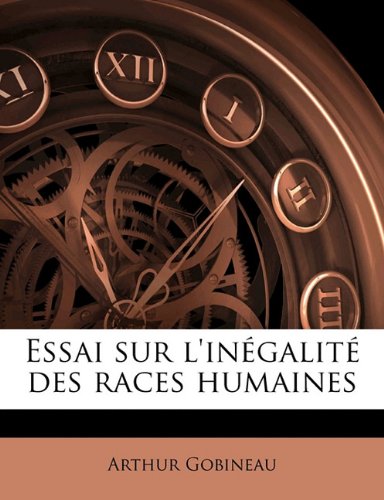
Racial theories in physical anthropology, 1850-1918
The scientific classification established by Carl Linnaeus is requisite to any human racial classification scheme. In the 19th century, unilineal evolution (a.k.a. classical social evolution) was a conflation of competing sociologic and anthropologic theories proposing that Western European culture was the acme of human socio-cultural evolution.
The proposal that social status is unilineal—from primitive to civilized, from agricultural to industrial—became popular among philosophers, including Friedrich Hegel, Immanuel Kant and Auguste Comte. The Christian Bible was interpreted to sanction slavery and from the 1820s to the 1850s was often used in the antebellum Southern United States, by writers such as the Rev. Richard Furman and Thomas R. Cobb, to enforce the idea that Negroes had been created inferior, and thus suited to slavery.
Charles Darwin
Darwin’s influential 1859 book On the Origin of Species did not discuss human origins. The extended wording on the title page, which adds By Means of Natural Selection, or the Preservation of Favoured Races in the Struggle for Life, uses the general term “races” as an alternative for “varieties” and does not carry the modern connotation of human races. The first use in the book refers to “the several races, for instance, of the cabbage” and proceeds to a discussion of “the hereditary varieties or races of our domestic animals and plants.”
In The Descent of Man, and Selection in Relation to Sex (1871), Darwin examined the question of “Arguments in favour of, and opposed to, ranking the so-called races of man as distinct species.” In Richard Weikart’s 2004 book From Darwin to Hitler: Evolutionary Ethics, Eugenics and Racism in Germany he wrote:
Darwin clearly believed that the struggle for existence among humans would result in racial extermination. In Descent of Man he asserted, “At some future period, not very distant as measured by centuries, the civilised races of man will almost certainly exterminate and replace throughout the world the savage races.”
The quoted passage, in full context, reads:
At some future period, not very distant as measured by centuries, the civilised races of man will almost certainly exterminate, and replace, the savage races throughout the world. At the same time the anthropomorphous apes, as Professor Schaaffhausen has remarked, will no doubt be exterminated. The break between man and his nearest allies will then be wider, for it will intervene between man in a more civilised state, as we may hope, even than the Caucasian, and some ape as low as a baboon, instead of as now between the negro or Australian and the gorilla. (The Descent of Man, 1871, Volume I, Chapter VI: “On the Affinities and Genealogy of Man,” pages 200-201).
Darwin contrasted the “civilized races” with the “savage races.” Like most of his contemporaries, except the naturalist Alfred Russel Wallace, he did not distinguish “biological race” from “cultural race.” Moreover, he noted that savage races risked extinction more from white European colonialism, than from evolutionary inadequacy. On the question of differences between races, Darwin wrote:
There is, however, no doubt that the various races, when carefully compared and measured, differ much from each other—as in the texture of the hair, the relative proportions of all parts of the body, the capacity of the lungs, the form and capacity of the skull, and even in the convolutions of the brain. But it would be an endless task to specify the numerous points of structural difference. The races differ also in constitution, in acclimatisation, and in liability to certain diseases.
Their mental characteristics are likewise very distinct; chiefly as it would appear in their emotional, but partly in their intellectual, faculties. Every one who has had the opportunity of comparison, must have been struck with the contrast between the taciturn, even morose, aborigines of S. America and the light-hearted, talkative negroes. There is a nearly similar contrast between the Malays and the Papuans, who live under the same physical conditions, and are separated from each other only by a narrow space of sea.
In An Essay on the Inequality of the Human Races (1853-55), Arthur de Gobineau (1816-1882), a French aristocrat and writer, proposed three human races and claimed that miscegenation would lead to the collapse of civilization. He established the equation of the terms “Germanic race” and “Aryan race.”
2 replies on “Raciology, 2”
Raciology? Have you read Vladimir Avdeyev’s work of that name?
I mention it: here.
P.S. of 8 June: There’s a raciology article on The Occidental Observer published a couple of days ago. Unfortunately, it’s marred by the phrase “There may be good reasons for public leaders to avoid discussion of sociobiology.”